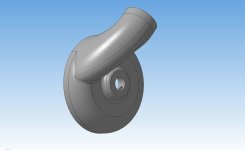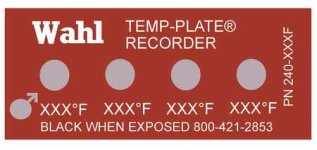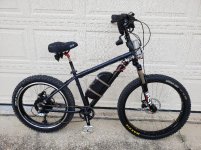Yea I know this is an old thread...just wanted to hear the latest from "mainsource" and others on their related projects. Hopefully some are still around and get notices about new posts on this topic.
A little additional info....
I am currently running a 12T MAC at 58.8 volts (14s battery) in a 27.5" rim with a Schwalbe Supermoto 2.8" wide tire. I cool it by using a mixture of distilled water and Motul Mocool...in the motor. Four ounces total with 5% Mocool by volume. Sealed the MAC hub/cover interface with Permatex Ultra Gray and have never had a problem with leaks. Previously used low viscosity Automatic Transmission Fluid (ATF) and it worked great for cooling but a tiny bit got on my rear rotor and my brakes quit working so trying something less slippery. The Mocool is a corrosion inhibitor. You can add fluid thru one of the brake rotor bolt holes or drain some out by leaning the bike on its side with two of the brake rotor bolts removed. Four ounces is enough to thermally connect the motor to the hub and transfer the heat so it can be rejected to the atmosphere and it is below the axle seal when the bike is upright so leakage is less of an issue.
I have been running the MAC at 40A for several years and have not had any problems to date with the clutch (I rarely pedal). Plan to install an 18 FET (60A) controller and slowly increase the amperage...after I get a battery that can supply the power. EM3ev is supposed to be developing a 20s (72v) triangle battery in the near future and I may try the MAC at 72v if the battery is available before I kill the motor. Grin Tech currently has a 20s2p (72v) battery available if anyone is interested. I plan to lace a MAC hub to a 24" rim and run a Duro 24x3.00 tire...as opposed to my current 27.5" setup.
Totally agree with the comments on a DD motor being a better option for high amperage applications but I just want to play around and test the limits of the MAC. Grin Tech now has the GMAC which is a new and improved version of the MAC and it has a locked clutch and is capable of regen...I may try a GMAC and/or the locked clutch if I break anything.
Why a MAC...well I went through every motor listed in the Grin Tech Motor Simulator (great tool by the way) and the MAC produces the most torque per amp than any motor listed (I geared the mid dirve motors 1:1 for comparison purposes). Well except for the Bafang G60 but the G60 design is a little less robust than the MAC and I am afraid it would not survive similar experiments.
Is anybody else pushing the limits of a MAC and what results have you had?
I may start a new MAC thread to discuss the limits of the MAC depending on interest..what do you guys think?
A little additional info....
I am currently running a 12T MAC at 58.8 volts (14s battery) in a 27.5" rim with a Schwalbe Supermoto 2.8" wide tire. I cool it by using a mixture of distilled water and Motul Mocool...in the motor. Four ounces total with 5% Mocool by volume. Sealed the MAC hub/cover interface with Permatex Ultra Gray and have never had a problem with leaks. Previously used low viscosity Automatic Transmission Fluid (ATF) and it worked great for cooling but a tiny bit got on my rear rotor and my brakes quit working so trying something less slippery. The Mocool is a corrosion inhibitor. You can add fluid thru one of the brake rotor bolt holes or drain some out by leaning the bike on its side with two of the brake rotor bolts removed. Four ounces is enough to thermally connect the motor to the hub and transfer the heat so it can be rejected to the atmosphere and it is below the axle seal when the bike is upright so leakage is less of an issue.
I have been running the MAC at 40A for several years and have not had any problems to date with the clutch (I rarely pedal). Plan to install an 18 FET (60A) controller and slowly increase the amperage...after I get a battery that can supply the power. EM3ev is supposed to be developing a 20s (72v) triangle battery in the near future and I may try the MAC at 72v if the battery is available before I kill the motor. Grin Tech currently has a 20s2p (72v) battery available if anyone is interested. I plan to lace a MAC hub to a 24" rim and run a Duro 24x3.00 tire...as opposed to my current 27.5" setup.
Totally agree with the comments on a DD motor being a better option for high amperage applications but I just want to play around and test the limits of the MAC. Grin Tech now has the GMAC which is a new and improved version of the MAC and it has a locked clutch and is capable of regen...I may try a GMAC and/or the locked clutch if I break anything.
Why a MAC...well I went through every motor listed in the Grin Tech Motor Simulator (great tool by the way) and the MAC produces the most torque per amp than any motor listed (I geared the mid dirve motors 1:1 for comparison purposes). Well except for the Bafang G60 but the G60 design is a little less robust than the MAC and I am afraid it would not survive similar experiments.
Is anybody else pushing the limits of a MAC and what results have you had?
I may start a new MAC thread to discuss the limits of the MAC depending on interest..what do you guys think?





